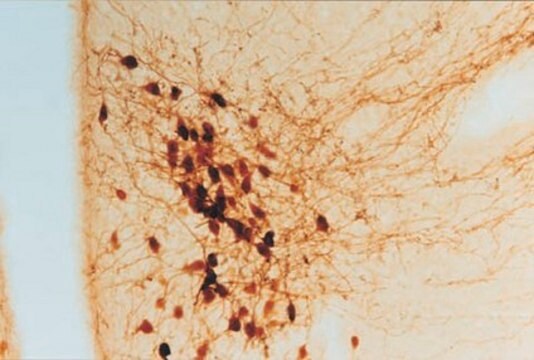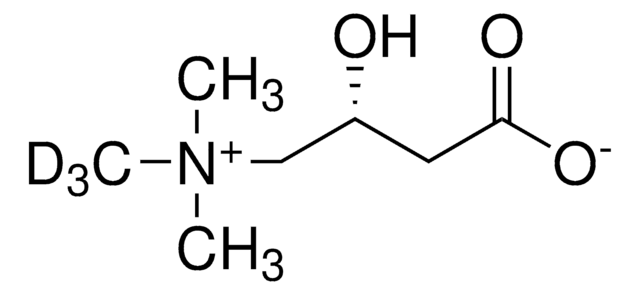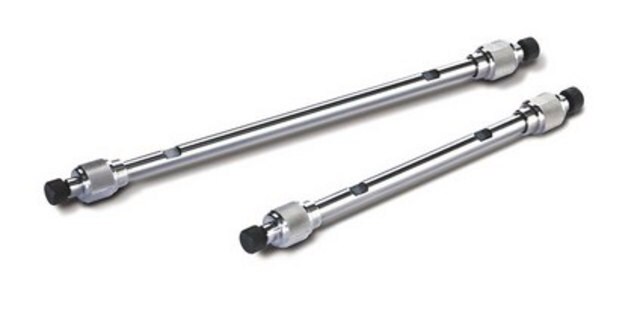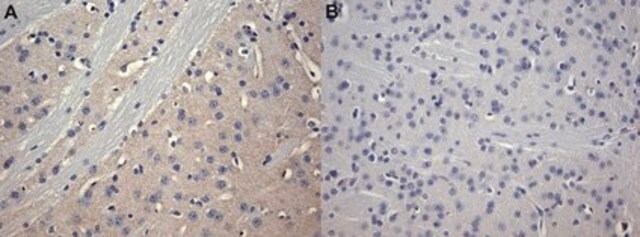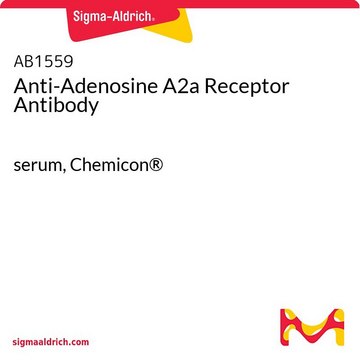推薦產品
生物源
mouse
品質等級
共軛
unconjugated
抗體表格
purified from hybridoma cell culture
抗體產品種類
primary antibodies
無性繁殖
DX 54.10, monoclonal
形狀
buffered aqueous solution
分子量
antigen ~175 kDa
物種活性
human, mouse
濃度
~1.5 mg/mL
技術
immunocytochemistry: suitable
immunoprecipitation (IP): suitable
microarray: suitable
western blot: 0.5-1 μg/mL using total cell extract of human osteogenic sarcoma
同型
IgG1
UniProt登錄號
運輸包裝
dry ice
儲存溫度
−20°C
目標翻譯後修改
unmodified
基因資訊
human ... TP53BP2(7159)
mouse ... Trp53bp2(209456)
一般說明
抗-ASPP2单克隆抗体(小鼠IgG1同种型)源自由小鼠骨髓瘤细胞(SP2/0细胞)和BALB/c小鼠脾细胞融合而产生的DX 54.10杂交瘤。p53(ASPP)蛋白家族的凋亡刺激蛋白包含三个成员,ASPP1,ASPP2和iASPP,它们通过其C末端区域与p53相互作用并调节其活性。
特異性
单克隆抗ASPP2可识别人和小鼠ASPP2。抗体识别的表位位于人ASPP2的氨基酸691-1128内。
免疫原
人ASPP2的片段(氨基酸691-1128)。
應用
使用单克隆小鼠抗ASPP2作为主要抗体,对Hek293或3T3-L1脂肪细胞裂解液进行蛋白质印迹分析。
小鼠单克隆抗ASPP2可用于免疫荧光分析。该抗体还可用于免疫细胞化学、免疫沉淀以及微阵列应用。
生化/生理作用
ASPP2是激活p53的肿瘤抑制因子。ASPP2还调节Par-3,Par-3随后在CNS发育过程中调节神经祖细胞的增殖和极性。 此外,ASPP2与活性Ras相互作用以诱导p53介导的细胞死亡。已知ASPP2可用作侵袭性垂体腺瘤的生物标记物。
p53(ASPP2)的凋亡刺激蛋白增强了p53诱导凋亡ASPP1的能力,刺激了不同基因(例如BCL2相关X,凋亡调节剂(Bax),p53诱导基因3(PIG3)和p53上调凋亡的调节剂(PUMA))的启动子上p63和p73的反式激活凋亡,但未刺激小鼠双分钟2同源物(Mdm2)或p21WAF-1/CIP1。
外觀
0.01M 磷酸缓冲盐溶液,pH 7.4,含 15mM 叠氮化钠。
免責聲明
除非我们的产品目录或产品附带的其他公司文档另有说明,否则我们的产品仅供研究使用,不得用于任何其他目的,包括但不限于未经授权的商业用途、体外诊断用途、离体或体内治疗用途或任何类型的消费或应用于人类或动物。
未找到適合的產品?
試用我們的產品選擇工具.
儲存類別代碼
10 - Combustible liquids
水污染物質分類(WGK)
WGK 3
閃點(°F)
Not applicable
閃點(°C)
Not applicable
個人防護裝備
Eyeshields, Gloves, multi-purpose combination respirator cartridge (US)
Lin Ma et al.
Oncology letters, 6(5), 1313-1318 (2013-11-02)
Nucleostemin is a GTP-conjugated protein located in the nucleoli of stem cells and certain cancer cells, and maintains cellular self-renewal. The present study aimed to evaluate nucleostemin as a potential target for pituitary adenoma gene therapy by investigating nucleostemin and
ASPP1 and ASPP2 are new transcriptional targets of E2F
Fogal V, et al.
Cell Death and Differentiation, 12(4), 369-369 (2005)
ASPP proteins specifically stimulate the apoptotic function of p53
Samuels-Lev Y, et al.
Molecular Cell, 8(4), 781-794 (2001)
Wei-Tzu Sun et al.
Biochemical and biophysical research communications, 376(2), 395-398 (2008-09-17)
The p53 tumor suppressor functions in maintaining the integrity of the genome. We have previously reported that DDA3 is an oncoprotein transcriptionally regulated by p53. To explore mechanisms underlying DDA3 action, we searched for its interacting proteins by yeast two-hybrid
Roberta Sottocornola et al.
Developmental cell, 19(1), 126-137 (2010-07-14)
Cell polarity plays a key role in the development of the central nervous system (CNS). Interestingly, disruption of cell polarity is seen in many cancers. ASPP2 is a haplo-insufficient tumor suppressor and an activator of the p53 family. In this
我們的科學家團隊在所有研究領域都有豐富的經驗,包括生命科學、材料科學、化學合成、色譜、分析等.
聯絡技術服務

